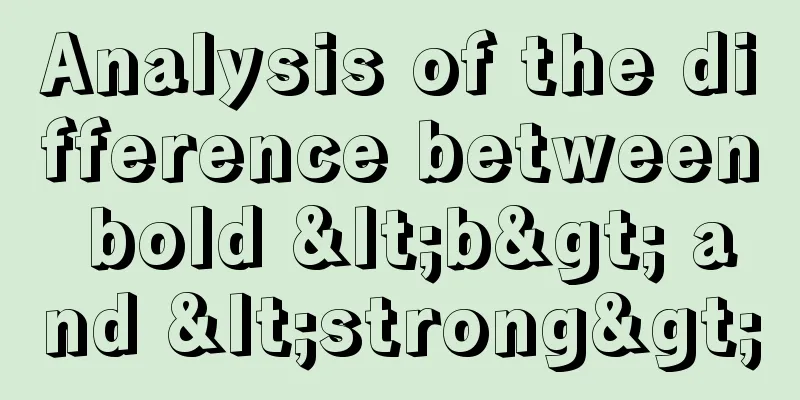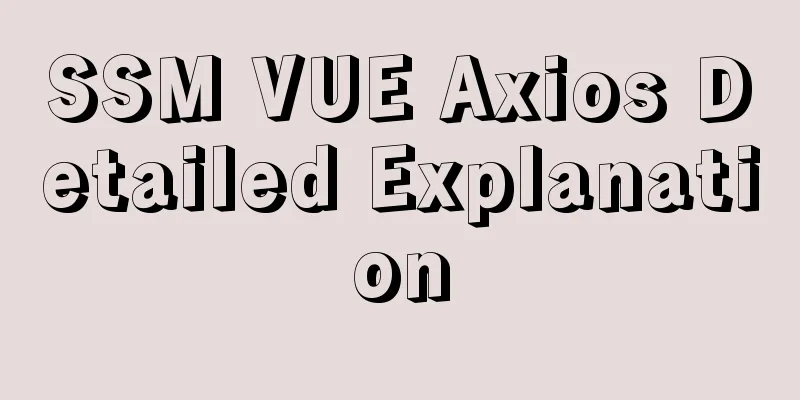Analysis of the difference between bold <b> and <strong>

|
All of us webmasters know that when optimizing a website, bolding the keywords in the article is extremely beneficial to the optimization.
|
>>: Specific usage of Vue's new toy VueUse
Recommend
MySQL 5.7.17 compressed package installation and configuration method graphic tutorial
There are few and inadequate installation tutoria...
Implementation method of Mysql tree recursive query
Preface For tree-structured data in the database,...
VMware virtual machine three connection methods example analysis
NAT In this way, the virtual machine's networ...
Best Practices for Implementing Simple Jira Projects with React+TS
A set of projects for training react+ts Although ...
A brief understanding of MySQL SELECT execution order
The complete syntax of the SELECT statement is: (...
Detailed steps for quick installation of openshift
The fastest way to experience the latest version ...
js dynamically implements table addition and deletion operations
This article example shares the specific code for...
Detailed explanation of Nginx Location configuration (Location matching order)
Location means "positioning", which is ...
Several ways to shut down Hyper-V service under Windows 10
When using VMware Workstation to open a virtual m...
How to understand the difference between ref toRef and toRefs in Vue3
Table of contents 1. Basics 1.ref 2. toRef 3. toR...
Tips for using top command in Linux
First, let me introduce the meaning of some field...
Tutorial on installing Seurat2 and Seurat3 simultaneously using the same version of R in Linux
Seurat is a heavyweight R package for single-cell...
How to open port 8080 on Alibaba Cloud ECS server
For security reasons, Alibaba Cloud Server ECS co...
Usage and scenario analysis of npx command in Node.js
npx usage tutorial Tonight, when I was learning V...
Detailed explanation of Vue lazyload picture lazy loading example
Documentation: https://github.com/hilongjw/vue-la...









